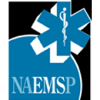This article originally appeared in the EMS MEd Reviews blog of the National Association of EMS Physicians and is reprinted here with permission.
By Clayton Kazan, MD
We live in a scary time in the practice of medicine, though I am not sure that there has been a time in which medicine was relatively un-challenged. We make a lot of errors, and those errors hurt a lot of people. It’s as true in EMS as anywhere else in the house of medicine.
First, we have to acknowledge that error is inevitable and cannot be completely eradicated. The attempt to eliminate all error is a fruitless endeavor as long as we have human beings acting at the point of care. That’s not to say that we cannot reduce the rate of error by incorporating best practices, but we need to learn to expect error to occur and to turn our energy to inhibiting the impact that the inevitable errors have on patient outcomes.
The first step is that we have to reconsider our system designs in ways to minimize the risk of errors. For example, we know that medication errors in the prehospital setting are common, and there are all kinds of contributing factors to those errors. Our personnel work in the most austere of settings; with low light, copious distraction, fatigue, and countless other challenges. We are often reminded by our personnel that they don’t work in the “pristine setting” of our emergency departments. But, hospitals recognized the harm potential of critical medication errors many moons ago, and so mandatory double checks for critical infusions like blood transfusions and thrombolytics are the standard. It’s ironic to use hospitals as the standard for medication safety mere weeks after a nurse was found guilty of negligent homicide for a medication error, but there is no question that mandatory double checks have reduced the risk of medication errors. So, we have to look far and wide to incorporate best practices, and, where they don’t exist, we need to invent them. We need to insert enough layers of Swiss cheese between potential errors and our patients so as to make the probability of an error reaching the patient near zero. I write this passage while flying on a jetliner, wholly confident that I will safely reach my destination because, decades ago, the airline industry looked at error exactly this way. Of course, if my plane crashed, you’d never know that this article existed anyway.
What we are bumping up against is culture, and that will inhibit this effort in two ways. First, we have to stop punishing our people for committing errors. The punitive culture around error is the biggest impediment to improving patient safety because it disincentivizes our providers from openly sharing their errors. Without that critical information, we will never really know where to even begin. If punitive action actually led to better accountability, error reduction, and better outcomes, then why are we still having this conversation? We need to build a just culture in which the manner that errors are reviewed is transparent, and punitive action is reserved for malicious misdeeds or repetitive at-risk behavior. As EMS Medical Directors, it is not our job to be the referee for our teams on the field … it’s our job to be their coach. What team thrives when the players on the field are afraid of being benched or traded when they commit an error? Only after we have established a just culture can we hope to build a reporting culture in which it is expected for safety issues to be shared, and a learning culture that embraces the educational opportunities.
The second cultural challenge that we will face is the inertia of “the way we’ve always done things.” Stale tradition is the death of innovative system design. Even a perfect system design, with dozens of layers of glorious Swiss cheese, makes no difference without system adoption. In the battle between system design and culture, culture always wins. Classically in healthcare, it takes physicians an average of 17 years to change our practice based on sound medical evidence, and the magic of 17 years is that it represents, approximately, half of a career. In that time, half of our physicians will have retired out and been replaced by a new crop of physicians, trained in the new system, that know no other way.
While we have to be patient, because culture changes do take time, we owe it to our patients to be persistent and to be the beacon that lights the way for the departments that we lead so that we can stop sacrificing our patients at the altar of “the way things have always been done.”
About the author
Clayton Kazan is the medical director of Los Angeles County Fire Department, President of the California Chapter of NAEMSP and Chair of NAEMSP Communications & Social Media Committee.













